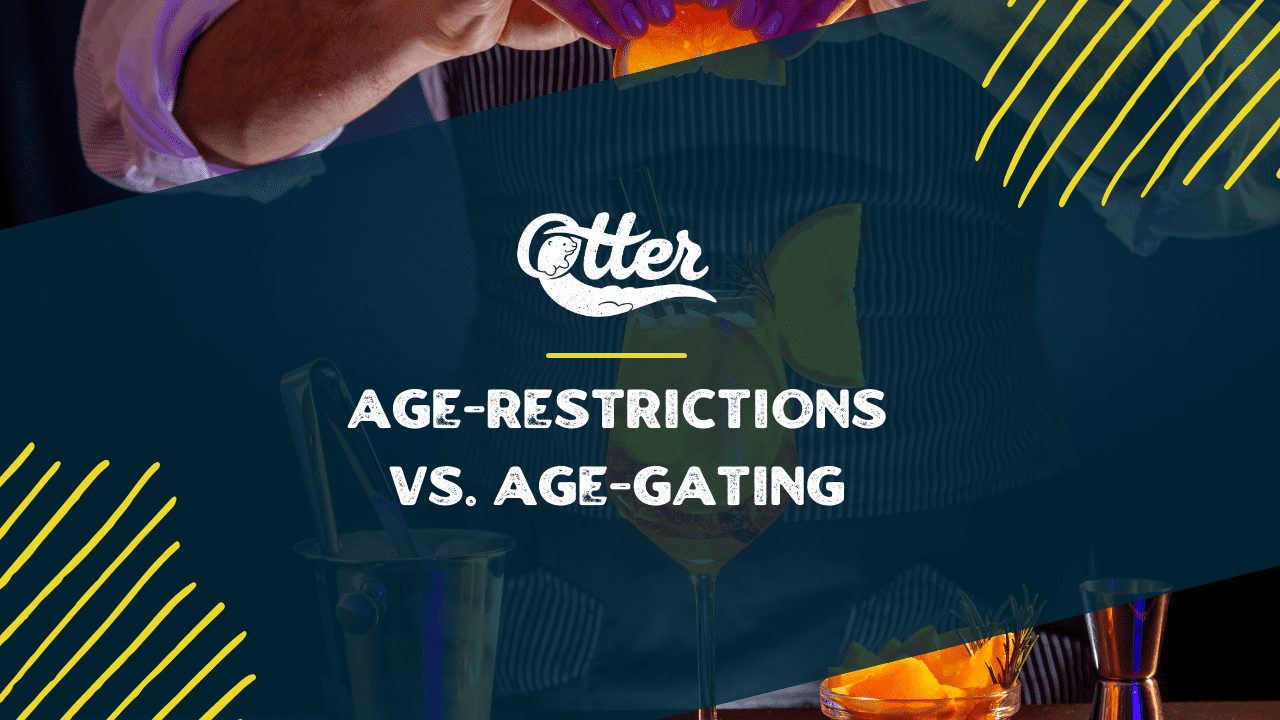Navigating the rules for marketing in industries like alcohol, firearms, and tobacco—often grouped under the term S.H.A.F.T.—can be tricky. The stakes are high: get it wrong, and you could face heavy fines or legal issues. One of the key challenges? Making sure you’re following the rules about who can see your marketing—especially when it comes to age.
This blog post will include two important tools for doing just that: age restrictions and age-gating. We’ll explain these terms, why they matter, and how to use them effectively to keep your marketing ethical and legal.
Whether new to marketing in these sensitive areas or just looking to brush up on the latest rules, this guide is for you.
Understanding Age-Restrictions
In industries that deal with sensitive or regulated products—like alcohol, firearms, or tobacco—age isn’t just a number; it’s a legal requirement. Age restrictions are the rules and guidelines that dictate who can legally purchase or access these types of products. But it’s not just about the point of sale; these restrictions also extend to marketing.
What Are Age Restrictions?
Age restrictions are legal limitations that prevent individuals below a certain age from buying or accessing specific products or content. For example, you must be at least 21 in the United States to purchase alcohol or firearms (18 for shotguns and rifles).
Why Are They Important in S.H.A.F.T. Industries?
Age restrictions serve a dual purpose:
- Consumer Safety: They help ensure that products are only sold to individuals legally allowed to use them, thereby promoting consumer safety.
- Legal Compliance: They help businesses avoid legal repercussions, including hefty fines and revocation of business licenses.
Legal Implications of Not Following Age-Restrictions
Ignoring age restrictions isn’t just unethical; it’s illegal. Non-compliance can result in severe penalties, including hundreds of thousands of dollars in fines. In extreme cases, businesses may even face closure or criminal charges.
The Role of Age-Gating
While age restrictions set the legal framework for who can access or purchase sensitive products, age-gating is the digital tool that helps enforce these rules online. It’s especially crucial in marketing campaigns, acting as the virtual bouncer that checks IDs at the door of your digital storefront or marketing channel.
What is Age-Gating?
Age-gating is a technology-based solution that verifies a user’s age before allowing them to access age-restricted content or products. This often requires users to enter their birthdates or undergo a more rigorous verification process.
Example in SMS Marketing
In the context of SMS marketing, age-gating can be implemented in various ways. For instance, when users opt-in to receive promotional messages through a Keyword or on a website, they may be asked to confirm their age by replying with their birthdate.
This opt-in process ensures that the subscriber is of legal age to receive the content. Some systems like OtterText even automate this process, sending a follow-up text requiring age verification before the user is fully subscribed.

Importance in S.H.A.F.T. Industries
In S.H.A.F.T. industries, age-gating serves as a critical layer of protection for both consumers and businesses:
- Consumer Protection: It ensures that underage users can’t access content or products that are inappropriate or illegal for them.
- Business Safety: It helps companies demonstrate due diligence in complying with age-restriction laws, reducing the risk of legal consequences.
Age-Restrictions Vs. Age-Gating
Now that we’ve explored the individual roles of age restrictions and age-gating, it’s time to examine them side by side. While both serve the same ultimate goal—ensuring that sensitive products are only accessed by those of legal age—they do so in different ways and offer unique advantages and challenges.
Comparison of Both
- Age restrictions: These legal guidelines dictate the minimum age for purchasing or accessing specific products. They are enforced at the point of sale or entry and are legally mandatory.
- Age-Gating: This is a technology-based method used primarily online to verify the age of users before they can access age-restricted content. It’s an additional layer of verification that complements age restrictions.
Which One is More Effective?
The effectiveness of age-restrictions and age-gating often depends on the context in which they are used:
- Physical Stores: Age restrictions are more straightforward to enforce through ID checks.
- Online Platforms and SMS Marketing: Age-gating is essential as it is the digital equivalent of an ID check. It is especially useful in SMS marketing, where users might be asked to confirm their age before receiving promotional content.
Compliance Guidelines
Navigating the complex landscape of age restrictions and age-gating can be challenging, but businesses in S.H.A.F.T. industries must get it right. Compliance isn’t just about avoiding penalties; it’s about building trust and credibility with your audience.
TCPA and CTIA Regulations
- TCPA (Telephone Consumer Protection Act): This U.S. law governs consumer telecommunication interactions, including SMS marketing. Violations can result in fines of up to $500 per incident.
- CTIA (Cellular Telecommunications Industry Association): This organization sets best SMS marketing practices, including age-restricted content guidelines. Non-compliance can lead to audits and even suspension of your SMS capabilities.
Penalties for Non-Compliance
The consequences for failing to comply with age-restrictions and age-gating can be severe:
- Fines: These can range from hundreds to thousands of dollars per violation.
- Legal Action: In extreme cases, businesses may face lawsuits or criminal charges.
- Reputation Damage: Non-compliance can tarnish your brand’s image, leading to customer trust and revenue loss.

OtterText: Your Key to SMS S.H.A.F.T. Compliance
OtterText is a platform designed to simplify SMS marketing compliance, particularly for businesses in S.H.A.F.T. industries. It offers automated solutions for age-gating, opt-in and opt-out processes and even helps you navigate carrier-specific policies.
Features and Benefits
- Automated Age-Gating: OtterText provides an automated system for age verification, making it easier to implement age-gating in your SMS marketing campaigns.
- Compliance Roadmap: The platform offers a comprehensive guide to text marketing compliance, covering everything from TCPA regulations to CTIA best practices.
- Carrier Policy Navigation: OtterText can help you adapt to carrier-specific policies, such as T-Mobile’s stringent rules on firearm campaigns.
Why Choose OtterText?
- Ease of Use: The platform is designed to be user-friendly, making it accessible even for those who are not tech-savvy.
- Legal Safeguard: OtterText’s focus on compliance provides a layer of legal protection for your business.
- Efficiency: Automated features save you time and effort, allowing you to focus on other aspects of your business.
Discover the ease of compliant SMS marketing with OtterText. Try it free for 14 days and experience the difference.



